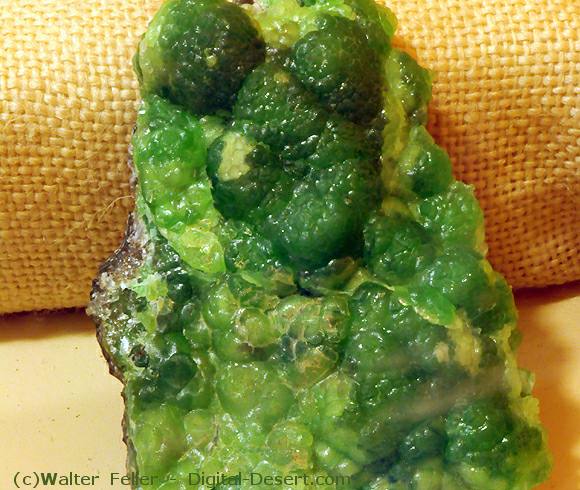Rocks, Minerals & Ores
Metallic Oxides
Smithsonite
zinc carbonate79 mine, Hayden, Gila County, AZ

<<
Metallic Oxides
Smithsonite belongs to the calcite group, a group of related carbonates that are isomorphous with one another. They are similar in many physical properties, and may partially or fully replace one another, forming a partial solid solution series. All members of the calcite group crystallize in the trigonal subdivision of the hexagonal system (as rhombohedrons and scalenohedrons), have perfect rhombohedral cleavage, and exhibit a strong double refraction in transparent rhombohedrons.
Smithsonite rarely occurs in visible crystals. Recently, two African mines have produced many large crystals different from all other Smithsonite specimens.
Smithsonite is essentially zinc carbonate, but the zinc is usually partially replaced with other elements. This is responsible for the great color variations this mineral exhibits. Copper is responsible for a green to blue coloring; cobalt, pink to purple; cadmium, yellow; iron, brown to reddish-brown. Smithsonite is a secondary mineral formed from the alteration of primary zinc minerals in the oxidization zone.
Minerals.net